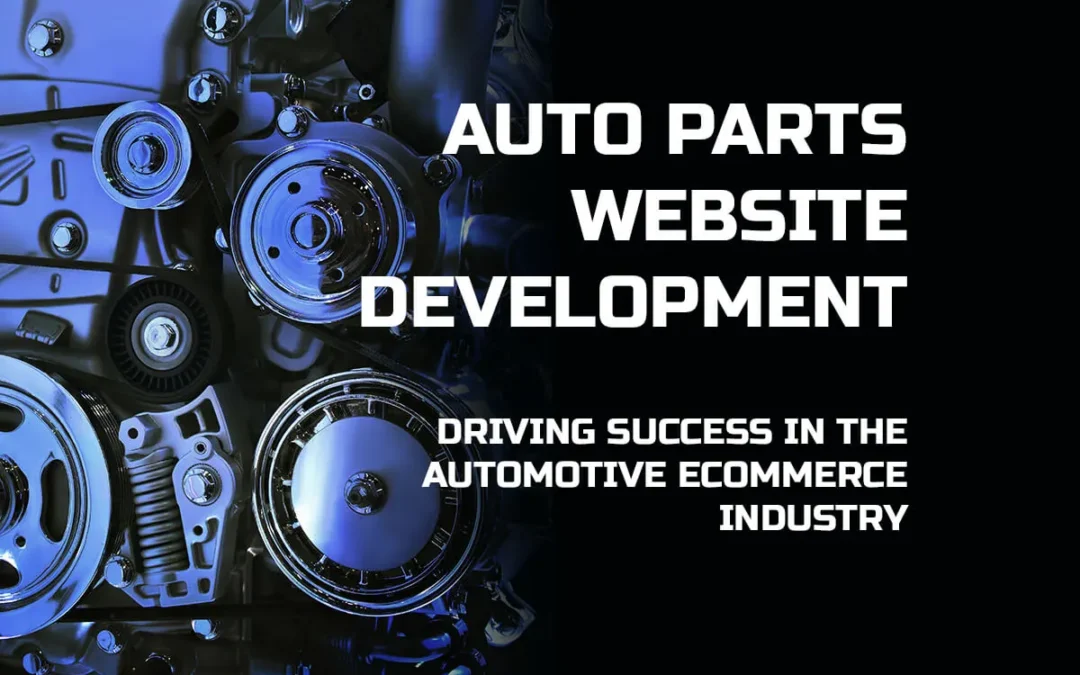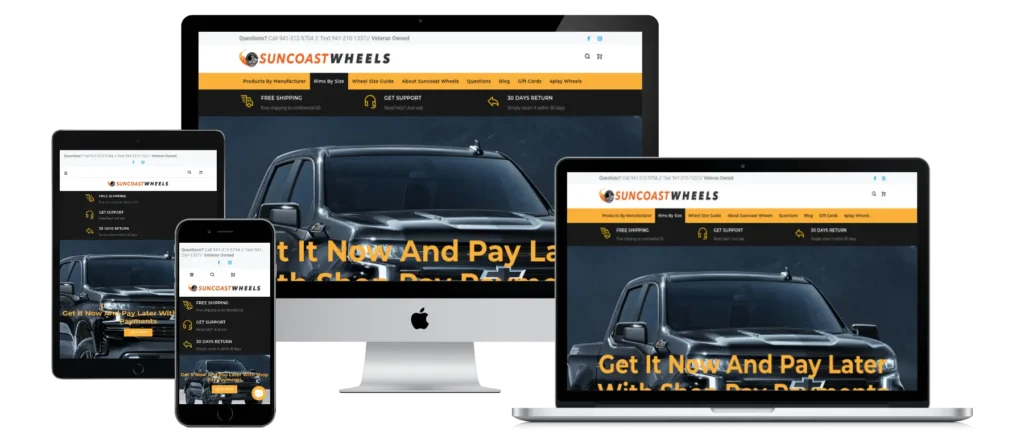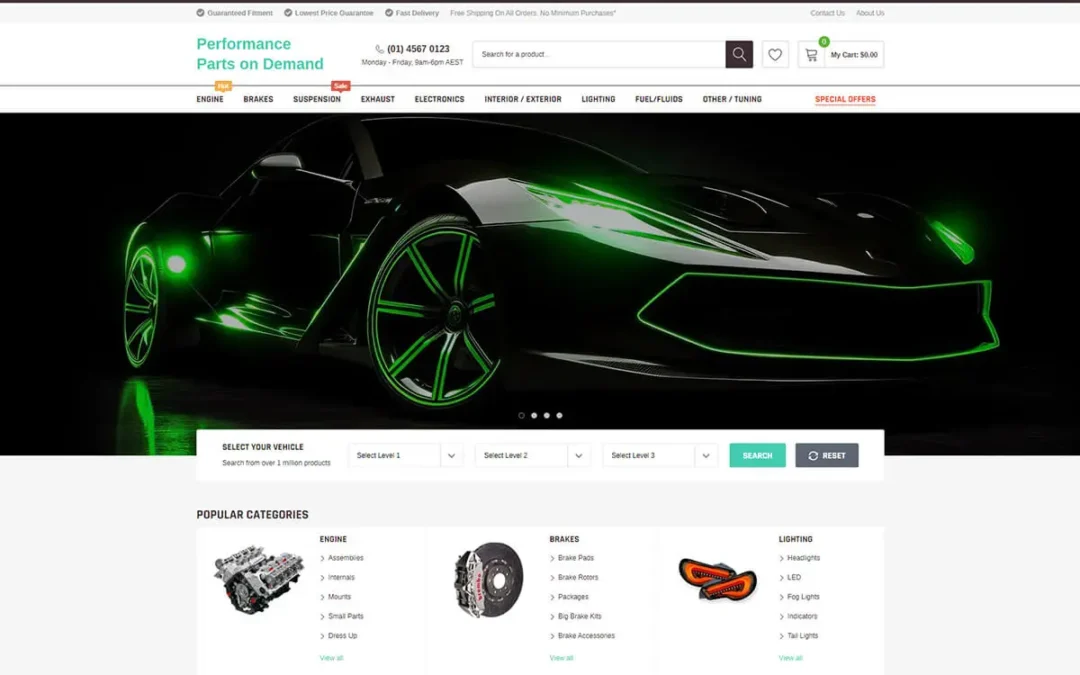
General
In the fast-paced world of the automotive industry, having a strong online presence is crucial for auto parts businesses. With the increasing demand for convenience and accessibility, consumers turn to the internet to find the parts they need. This is where auto parts website development becomes essential.
The Road to Success
Style
When it comes to creating a successful auto parts website, it’s all about engaging your audience with short, snappy sentences and a creative approach. Let’s explore the checklist to ensure your website development project gets on the right track.
Format
Markdown is an excellent choice for text formatting. Here’s how you can structure your auto parts website for optimal results:
- Responsive Web Design: Ensure your website looks and functions flawlessly on all devices.
- User-Friendly Navigation: Make it easy for customers to find the parts they need.
- Product Listings Optimization: Present your products in an organized manner.
- Inventory Management System: Keep track of your stock to avoid disappointments.
- Content Management System: Streamline content updates for fresh information.
- Auto Parts Database: Maintain an accurate database for efficient searches.

Tone
To establish expertise and build trust, provide balanced opinions and real-life examples:
- Automotive Industry Trends: Stay updated with the latest trends to offer relevant products.
- Competitive Analysis: Study your competitors to stay ahead in the market.
- Quality Assurance: Assure customers of the quality of your products.
- Customer Retention Strategies: Implement tactics to keep customers coming back.
SEO
SEO is vital for visibility. Make sure you’re covering these aspects:
- Keyword Usage: Incorporate “auto parts website development” and related LSI keywords.
- SEO for Auto Parts Websites: Optimize your website for search engines.
- Auto Parts SEO: Focus on SEO specifically for auto parts.

Building Blocks of Auto Parts Website Development
1. Vehicle Fitment Data
One of the key features of a successful auto parts website is the ability to match parts with specific vehicle makes and models. Utilize advanced vehicle fitment data to enhance the user experience.

2. Secure Online Transactions
Customer trust is paramount. Implement secure payment gateways to protect sensitive information during online transactions.
3. Mobile-Friendly Development
With the rise in mobile usage, ensure your website is mobile-responsive. A mobile app can also be a valuable addition.
4. Shipping and Delivery Options
Offer a variety of shipping options to cater to different customer preferences. Ensure timely delivery to build trust.
5. Content Marketing
Create engaging content that educates and informs. Maintain a blog with informative articles about auto parts and industry trends.
6. Social Media Integration
Connect with your audience on social media platforms like Facebook, Instagram, and Twitter. Share product updates, industry news, and engage in conversations with your followers.
7. Customer Support Tools
Provide exceptional customer support with tools like live chat, email support, and a comprehensive FAQ section.
Driving Sales and Customer Satisfaction
8. Competitive Pricing
Keep an eye on market prices and adjust your pricing strategy to remain competitive.
9. Auto Parts Reviews
Integrate customer reviews into your product listings to build trust and provide social proof.
10. Auto Parts Analytics
Utilize analytics tools to gain insights into user behavior and adjust your strategies accordingly.
Beyond Development: Marketing Strategies
11. Email Marketing Campaigns
Implement email marketing to keep customers informed about promotions, new products, and industry news.
12. Influencer Marketing
Collaborate with automotive influencers to reach a wider audience and gain credibility.
13. Auto Parts Remarketing
Re-engage potential customers who have previously visited your website but didn’t make a purchase.
Read more articles about Automotive Web Design:
Conclusion: Driving Success in the Auto Parts Industry
In the competitive world of auto parts eCommerce, a well-developed website is your vehicle to success. By following the checklist and incorporating these essential elements into your auto parts website, you’ll be on the road to attracting customers, boosting sales, and establishing your brand as a leader in the industry.
Remember, the automotive industry is constantly evolving, so stay agile and adapt to new technologies and trends. With the right strategy and a user-focused approach, your auto parts website can drive you towards long-term success in the ever-expanding world of online auto parts sales.
By incorporating these strategies and continually optimizing your website, you can steer your auto parts business toward a bright and prosperous future.
Keep driving forward and watch your auto parts business thrive in the digital age!

General
In today’s digital age, having an online presence is crucial for businesses to succeed. This is especially true for auto parts retailers, who can benefit greatly from an ecommerce website. In this article, we will explore the key aspects of auto parts ecommerce website development, including the benefits, features, and best practices.
Benefits of Auto Parts Ecommerce Website Development
- Increased Reach: An ecommerce website allows auto parts retailers to reach a wider audience beyond their local market. This means that they can sell their products to customers from all over the world, increasing their customer base and revenue.
- 24/7 Availability: Unlike physical stores, ecommerce websites are open 24/7, allowing customers to shop at any time of the day or night. This convenience can lead to increased sales and customer satisfaction.
- Cost-Effective: Developing an ecommerce website can be more cost-effective than opening a physical store.
- This is because there are no rent, utilities, or other overhead costs associated with maintaining a physical location.
- Better Customer Experience: Ecommerce websites offer a better customer experience by providing detailed product information, reviews, and ratings. This helps customers make informed purchasing decisions and increases their trust in the retailer.
Features of Auto Parts Ecommerce Websites
- User-Friendly Interface: A user-friendly interface is essential for any ecommerce website. This means that the website should be easy to navigate, with clear product categories and search functionality.
- Mobile Responsiveness: With more and more people using their mobile devices to shop online, it is important for ecommerce websites to be mobile responsive. This means that the website should be optimized for viewing on mobile devices, with easy-to-use navigation and fast loading times.
- Secure Payment Gateway: A secure payment gateway is crucial for any ecommerce website. This ensures that customer payment information is protected and that transactions are processed securely.
- Product Catalog: An auto parts ecommerce website should have a comprehensive product catalog that includes detailed product descriptions, images, and pricing information.
Best Practices for Auto Parts Ecommerce Website Development
- Choose the Right Ecommerce Platform: There are many ecommerce platforms available, each with its own set of features and benefits. It is important to choose the right platform that meets the specific needs of your auto parts business.
- Optimize for Search Engines: Search engine optimization (SEO) is crucial for any ecommerce website. This involves optimizing the website’s content and structure to improve its visibility in search engine results pages (SERPs).
- Provide Excellent Customer Service: Providing excellent customer service is essential for any ecommerce business. This includes offering multiple channels for customer support, such as email, phone, and live chat.
- Use Analytics to Track Performance: Analytics tools can provide valuable insights into the performance of an ecommerce website. This includes tracking website traffic, conversion rates, and customer behavior.
Building Your Online Presence
The next step in the development process involves building a robust online presence. This includes:
- Domain Selection: Choosing a relevant and memorable domain name is the first step towards creating a brand identity.
- Website Design: A visually appealing and functional website design sets the tone for your brand.
- Content Creation: High-quality content, including product descriptions and blog posts, enhances your website’s authority and user engagement.
Marketing Strategies
To attract a steady flow of customers, you need effective marketing strategies:
Social Media Marketing: Leveraging platforms like Facebook, Instagram, and Twitter can help you reach a broader audience.
Email Marketing: Building an email list and sending out newsletters can keep customers informed about promotions and new arrivals.
Pay-Per-Click Advertising: PPC campaigns can drive targeted traffic to your website.

Handling Logistics
Efficient logistics management ensures smooth operations:
Inventory Management: Maintaining an up-to-date inventory prevents overstocking or running out of essential parts.
Shipping and Delivery: Offering reliable shipping options and tracking enhances the customer experience.
Content is King: Optimized Product Descriptions
Keyword Research
To dominate the auto parts ecommerce market on Google, you must conduct thorough keyword research. Identify the most relevant and high-converting keywords related to your products. These keywords should be seamlessly integrated into your product descriptions, ensuring that your website aligns with the search queries of potential customers.
Unique and Engaging Descriptions
In the digital realm, originality sets you apart. When crafting product descriptions, avoid generic content that merely lists specifications. Instead, provide comprehensive and engaging descriptions that highlight the benefits and features of each auto part. This not only appeals to customers but also helps Google recognize your website as a valuable resource.
Building Trust with Reviews and Testimonials
Customer Feedback
Genuine customer reviews and testimonials are powerful tools for establishing trust and credibility. Encourage satisfied customers to leave reviews on your website. Showcase these reviews prominently, demonstrating your commitment to quality and customer satisfaction.
Trust Badges
Incorporate trust badges and certifications into your website design. These visual cues reassure customers of your website’s security and authenticity. When users feel safe, they are more likely to make a purchase, and Google recognizes this as a positive user experience signal.
Streamlined Checkout Process
Simplify the Process
One of the most critical aspects of auto parts ecommerce website development is the checkout process. It should be streamlined and hassle-free. Lengthy forms and complicated steps can deter potential buyers. Implement a one-click checkout option, if possible, and ensure that the process is secure and efficient.
Guest Checkout
Offering a guest checkout option is another strategy to reduce friction in the buying process. Not all customers want to create an account, and by accommodating guest checkouts, you cater to a broader audience, potentially increasing your conversion rate.
SEO and Performance Optimization
Site Speed
Google values fast-loading websites. Slow loading times can lead to high bounce rates, negatively impacting your rankings. Optimize your website’s performance by compressing images, leveraging browser caching, and using a Content Delivery Network (CDN).
SEO-Friendly URLs
Craft SEO-friendly URLs that incorporate relevant keywords and make it easy for search engines to understand the content of your pages. Avoid long, convoluted URLs that can confuse both users and search engine crawlers.
Explore additional auto parts eCommerce website development articles
Conclusion
Auto parts ecommerce website development can be a game-changer for auto parts retailers. By providing a wider reach, 24/7 availability, and a better customer experience, ecommerce websites can help businesses increase their revenue and customer base. To ensure success, it is important to choose the right ecommerce platform, optimize for search engines, provide excellent customer service, and use analytics to track performance. With these best practices in mind, auto parts retailers can develop a successful ecommerce website that meets the needs of their customers and drives business growth.
Are you in search of a top-tier web design company to revamp your auto repair business’s online presence? Look no further! We specialize in crafting cutting-edge websites tailored specifically for auto repair shops, ensuring that you not only stand out but also provide an exceptional user experience for your customers. Don’t settle for mediocrity; choose the Best Auto Repair Web Design Company today!
FAQs
- What is the significance of SEO in auto parts e-commerce website development? SEO plays a crucial role in improving website visibility, driving organic traffic, and boosting rankings on search engines.
- How can I ensure the security of online transactions on my e-commerce website? You can ensure secure transactions by integrating reputable payment gateways and implementing SSL certificates for data encryption.
- What are some effective social media platforms for marketing auto parts online? Popular platforms like Facebook, Instagram, and Pinterest are effective for reaching a wide audience in the automotive niche.
- How important is mobile responsiveness for an auto parts e-commerce website? Mobile responsiveness is essential, as it ensures that customers can access and navigate your website seamlessly on various devices.
- What are the key challenges in managing an auto parts e-commerce website’s inventory? The main challenges include accurate stock tracking, avoiding overstocking, and ensuring that popular products are always in supply.






